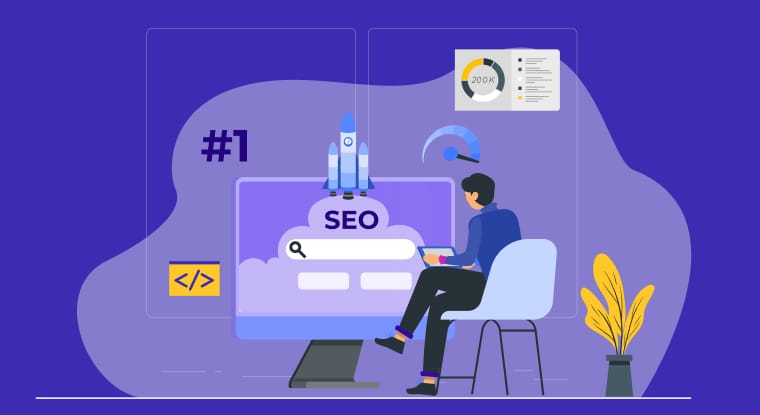In the constantly changing landscape of digital marketing, Search Engine Optimization (SEO) remains one of the most powerful strategies for attracting organic traffic to websites. With millions of websites competing for attention on search engines, mastering SEO is essential for any business or individual looking to build a strong online presence. SEO not only improves a website’s rankings on search engine results pages (SERPs) but also enhances user experience and overall website performance. In this blog, we’ll dive into how SEO drives organic traffic and why it is crucial for long-term success.
1. What is Organic Traffic
Organic traffic refers to visitors who land on your website through unpaid search engine results. When users type a query into a search engine like Google, the results they see include both paid ads and organic listings. Organic results are determined by a website’s relevance, authority, and optimization practices, not by payment.
Organic traffic is incredibly valuable because it shows real interest in your content, products, or services. People who find your website through organic search are actively seeking information or solutions related to your offerings, making them more likely to engage with your site and convert into customers.
2. How SEO Increases Organic Traffic
SEO involves optimizing your website to make it more appealing to search engines such as Google, Bing, and Yahoo. A well-optimized site is more likely to rank higher on SERPs for relevant search queries, leading to increased organic traffic. Here’s how SEO contributes to this:
a. Keyword Optimization
Effective keyword research and usage form the backbone of SEO. Keywords are the terms or phrases users type into search engines. By identifying the right keywords that your target audience is searching for, you can optimize your website content, meta descriptions, headers, and images accordingly. When your content aligns with user search intent, search engines are more likely to rank your pages higher, driving more organic traffic.
b. On-Page SEO
On-page SEO focuses on optimizing individual web pages to rank higher and attract more relevant traffic. This includes optimizing your content, title tags, meta descriptions, and internal linking. High-quality content that naturally includes target keywords, combined with a user-friendly website structure, can greatly improve your site’s visibility on search engines.
c. Technical SEO
Technical SEO involves improving the behind-the-scenes elements of your website, such as page load speed, mobile responsiveness, secure connections (HTTPS), proper indexing, and a clean site architecture. Search engines favor websites that provide a smooth user experience, so enhancing these technical aspects can boost your search rankings and attract more organic traffic.
d. Backlinks and Building Authority
A critical aspect of SEO is building your website’s authority through backlinks. Backlinks are links from reputable websites that point to your site. Search engines see backlinks as endorsements of your site’s credibility. The more high-quality backlinks you earn, the more likely search engines will rank your site highly, resulting in increased organic traffic as your site gains recognition as a trusted resource.
3. Long-Term Benefits of SEO
Unlike paid advertising, SEO offers lasting benefits. Once your website starts ranking for important keywords, it can continue to generate organic traffic for months or even years with minimal ongoing costs. This makes SEO a sustainable way to grow your online presence.
Additionally, SEO targets users at all stages of the sales funnel. Whether someone is just browsing for information or is ready to make a purchase, SEO ensures that your website appears when it matters most.
4. Local SEO: Targeting Specific Audiences
For businesses targeting local markets, local SEO plays a crucial role in driving location-based organic traffic. Local SEO involves optimizing your website to rank for searches in specific geographic areas, such as appearing in Google’s local pack or on Google Maps. For example, a business offering services in Balussery, Kerala, could use local SEO strategies to rank higher for searches like “digital marketing services in Balussery.”
By focusing on local SEO, businesses can attract more relevant traffic from nearby areas and convert more local visitors into customers.
5. SEO vs. Paid Traffic: Why Organic Matters
While paid traffic through ads can deliver quick results, it requires continuous investment to maintain. Organic traffic, driven by SEO, is more sustainable and cost-effective in the long run. SEO-driven traffic generally has higher engagement rates because users are genuinely interested in the content they find, leading to better conversion rates. Additionally, users tend to trust organic search results more than paid ads, which further enhances your credibility and trustworthiness.
Conclusion
SEO is a key component of digital marketing that directly influences how much organic traffic your website receives. From optimizing keywords and on-page elements to building backlinks and improving technical performance, SEO is essential for improving search rankings and increasing organic traffic. By investing in SEO, businesses and individuals can achieve long-term growth, increased visibility, and a steady stream of relevant visitors. In today’s fast-paced digital world, SEO remains a cornerstone of successful online strategies, proving time and again that organic traffic is one of the most valuable assets a website can have.

